Click on images to enlarge
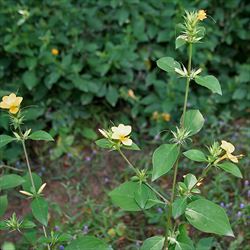
By J.M.Garg (Own work) [GFDL (http://www.gnu.org/copyleft/fdl.html) or CC BY-SA 4.0-3.0-2.5-2.0-1.0 (http://creativecommons.org/licenses/by-sa/4.0-3.0-2.5-2.0-1.0)], via Wikimedia Commons
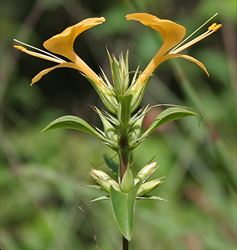
Close up of yellow flowers of Barleria prionitis. By J.M.Garg (Own work) [GFDL (http://www.gnu.org/copyleft/fdl.html) or CC BY-SA 4.0-3.0-2.5-2.0-1.0 (http://creativecommons.org/licenses/by-sa/4.0-3.0-2.5-2.0-1.0)], via Wikimedia Commons
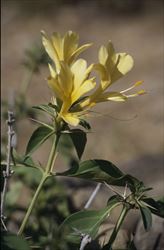
Yellow flower of Barleria prionitis By Ziegler175 (Own work) [CC BY-SA 3.0 (http://creativecommons.org/licenses/by-sa/3.0)], via Wikimedia Commons

Yellow flower of Barleria prionitis. By Adityamadhav83 (Own work) [CC BY-SA 3.0 (http://creativecommons.org/licenses/by-sa/3.0)], via Wikimedia Commons
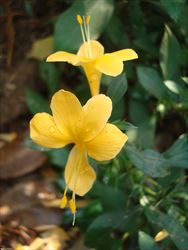
By Dharmadhyaksha (Own work) [CC BY-SA 3.0 (http://creativecommons.org/licenses/by-sa/3.0)], via Wikimedia Commons
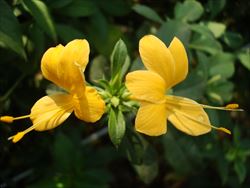
By Dharmadhyaksha (Own work) [CC BY-SA 3.0 (http://creativecommons.org/licenses/by-sa/3.0)], via Wikimedia Commons
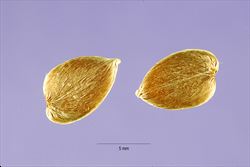
close-up of seeds (Photo: Tracey Slotta at USDA PLANTS Database)
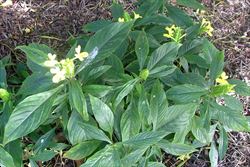
yellow barleria, Barleria micans (Photo: Sheldon Navie)
Scientific Name
Barleria prionitis L.
Family
Acanthaceae
Common Names
barleria, porcupine flower
Origin
Native to south-eastern Asia (i.e. Indonesia, Malaysia and the Philippines), the Indian Sub-continent, and the tropical regions of eastern Africa.
Cultivation
This species has been grown as a garden plant (i.e. ornamental) in parts of northern Australia.
Naturalised Distribution
The naturalised distribution of this species is currently relatively limited in Australia. It has been recorded in the coastal districts of northern Queensland (i.e. near Townsville and on Boigu Island in the Torres Strait) and in the northern parts of the Northern Territory (i.e. near Darwin, Berry Springs, Mataranka, Katherine and in the Victoria River area). It is possibly also naturalised in the coastal regions of northern Western Australia (i.e. it was reported at Kununurra in the Kimberley region in 2002).
Also naturalised in Papua New Guinea and on islands in the Pacific (i.e. Nauru), Indian (i.e. La Réunion and Mauritius) and Atlantic (i.e. Puerto Rico) Oceans.
Habitat
A weed of waterways, open woodlands, roadsides, disturbed sites, waste areas and overgrazed pastures in tropical regions.
Habit
A small, upright (i.e. erect), spiny shrub growing from 0.6-1.8 m tall, but usually only about 0.7 m in height.
Distinguishing Features
- a small upright prickly shrub usually growing up to 1.8 m tall.
- its stems are usually square in cross-section and three to five spines (5-20 mm long) are produced in the leaf forks.
- its oppositely arranged leaves (3-13 cm long and 1.5-4 cm wide) end in a short spine.
- its stalkless yellow flowers are borne in clusters at the tips of the branches or singly in the upper leaf forks.
- these flowers are tubular in shape (3-4 cm long) and have spine-tipped sepals.
- its fruit is a capsule (13-20 mm long) with a sharply-pointed 'beak' (about 6 mm long).
Stems and Leaves
The older stems and branches are robust, rounded, and light brown or light grey in colour. Three to five pale-coloured spines (5-20 mm long) are produced in the forks (i.e. axils) of the lower leaves. Younger stems are somewhat squarish in cross-section (i.e. quadrangular) and greenish in colour.
The oppositely arranged leaves (3-13 cm long and 1.5-4 cm wide) are either oval (i.e. elliptic), oblong or egg-shaped in outline (i.e. ovate). These leaves are hairless (i.e. glabrous) or slightly hairy (i.e. puberulent) on their undersides. Their margins are entire and they have pointed tips (i.e. acute apices) that end in a short spine.
Flowers and Fruit
The stalkless (i.e. sessile) flowers are borne in branched spike-like clusters at the tips of the branches or in the upper leaf forks (i.e. in terminal or axillary clusters). They are yellow or pale orange in colour, tubular in shape (3-4 cm long) with protruding stamens. Each flower has five petal lobes (i.e. corolla lobes) and four spine-tipped sepals (about 15 mm long). Flowering occurs mainly during autumn (i.e. typically during April and May).
The fruit is a capsule (13-20 mm long) with a sharply-pointed 'beak' (about 6 mm long) and contains two seeds. These seeds are reasonably large (about 8 mm long and 5 mm wide), flattened, and densely covered with matted hairs. The fruit are normally present during winter.
Reproduction and Dispersal
This species reproduces mainly by seed, though it may also be able to reproduce vegetatively via stem fragments.
These seeds may be spread short distances when the capsules explosively open to release their seeds. They may also be dispersed by water and in dumped garden waste.
Environmental Impact
Barleria (Barleria prionitis ) is regarded as an environmental weed or potential environmental weed in the Northern Territory, Western Australia and Queensland. It is on the Alert List for Environmental Weeds, a list of 28 introduced plants that threaten biodiversity and cause other environmental damage.
This species is invasive and persistent in open woodlands and along watercourses in northern Australia (e.g. it infests the riparian zone of the Katherine River in the Northern Territory). It can spread to form dense prickly thickets, particularly in disturbed areas, and field observations suggest that it favours areas where much of the original native vegetation has been removed. These thickets have the potential to displace native vegetation and prevent the revegetation of native plants.
Other Impacts
Thickets of this species can reduce the productivity of pastures, impede the movement of livestock, restrict access to waterways, and reduce the aesthetic values of natural bushland. The spines on its stems can also cause injury to humans and livestock.
Legislation
This species is declared under legislation in the following states and territories:
- Northern Territory: A - to be eradicated (throughout all of the Territory), and C - not to be introduced into the Territory.
- Western Australia: Unassessed - this species is declared in other states or territories and is prohibited until assessed via a weed risk assessment (throughout the entire state).
Management
For information on the management of this species see the following resources:
- the Northern Territory Department of Natural Resources, Environment and The Arts Agnote on this species, which is available online at http://www.nt.gov.au/weeds.
Similar Species
Barleria (Barleria prionitis) is very similar to a closely related plant known as hophead barleria (Barleria lupulina). These two species can be distinguished by the following differences:
- barleria (Barleria prionitis) has relatively broad leaves that do not have a prominent reddish-coloured midvein.
- hophead barleria (Barleria lupulina) has narrow leaves with a prominent reddish-coloured midvein.
Another closely related species, yellow barleria (Barleria micans ), is occasionally grown in gardens. It can be distinguished from barleria (Barleria prionitis ) by the lack of spines on its stems.
This fact sheet has been updated thanks to the sponsorship of Sunshine Coast Council.

